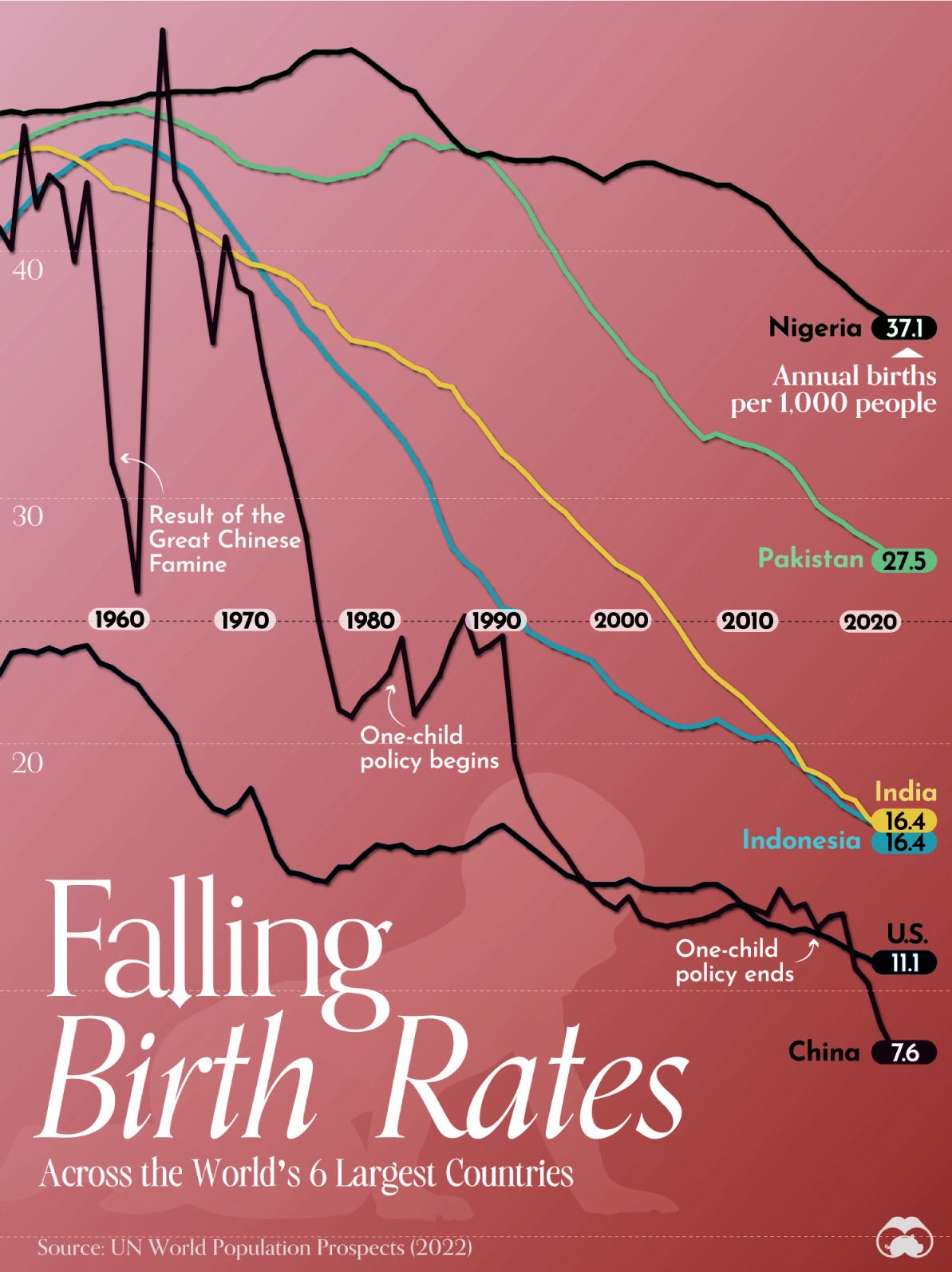In addition to the worsening climate crisis, which is set to escalate over the coming decades and already takes a significant toll on human lives, another critical factor threatens the stability of nations: population decline combined with increasing life expectancy. This combination poses an explosive challenge—possibly more pressing in the short term than global warming itself—for the survival of states. Scientists, sociologists, and governments must act immediately to address this issue.
The economic and social impact, particularly regarding pressure on pension and healthcare systems, as well as a growing labor shortage, could jeopardize the stability and viability of many nations. The challenge is clear: countries that are already facing or will soon face population decline need to find solutions, such as immigration incentives and pro-natalist policies, along with significant reforms in social and tax structures. All of this is happening amid increasingly extreme and unpredictable climate events.
Common factors contributing to population decline:
Low birth rates: Many countries have birth rates below the replacement level (2.1 children per woman).
Aging populations: The proportion of elderly people is rising, which increases mortality rates.
Emigration: In several regions, particularly Eastern Europe, the outflow of young workers contributes to population decline.
Cultural and socioeconomic changes: Urbanization, greater female participation in the workforce, and shifts in family aspirations are reducing birth rates.
Countries already experiencing population decline today:
Japan: Japan’s population has been shrinking for years due to one of the world’s lowest birth rates and high life expectancy.
Italy: One of the oldest populations in Europe, Italy faces shrinking demographics due to low birth rates.
Germany: Despite offsetting some population decline with immigration, Germany’s birth rates remain low.
Russia: Russia struggles with declining birth rates and significant emigration, worsening its population drop.
Ukraine: War, emigration, and low birth rates are accelerating Ukraine’s population decline.
Hungary: Hungary grapples with low birth rates, despite government efforts to boost fertility.
Bulgaria: Bulgaria has one of the fastest population declines globally, driven by emigration and low fertility rates.
Latvia: Latvia faces significant population decline due to emigration and low birth rates.
Lithuania: Like Latvia, Lithuania experiences mass emigration and a low birth rate.
Croatia: Emigration combined with low birth rates is driving Croatia’s population decline.
Countries expected to face population decline over the next 10 years:
China: China is on the brink of population decline, due to its former one-child policy and rapid aging.
Spain: Low fertility rates and an aging population will lead to demographic contraction, especially without sufficient immigration.
South Korea: With one of the world’s lowest birth rates, South Korea’s population is expected to shrink in the coming decades.
Poland: Low fertility and emigration trends suggest an imminent population decrease.
Portugal: Like many European nations, Portugal’s low birth rate and aging population will lead to contraction.
Greece: Ongoing economic and demographic challenges will continue to push Greece’s population downward.
Romania: Romania is already experiencing population decline, driven by emigration and low fertility, and this trend is likely to continue.
Serbia: Emigration and low birth rates continue to impact Serbia’s population growth.
Thailand: Aging and low fertility will significantly reduce Thailand’s population.
Cuba: With low birth rates and high emigration, Cuba is expected to face population decline in the coming decades.
Data, and more data
In 2023, 132 million babies were born and nearly 62 million people died. Resulting in a population growth of 70 million people (+0.9%).
But as birth rates fall around the world, the number of deaths occurring each year is expected to surpass the number of births by 2084. This could potentially kick off an era of global population decline.
By the year 2100, the UN estimates the global population could shrink by nearly 13 million people, roughly the current populace of Bolivia.
Of course, these estimates are not exact and occur within a 95% confidence interval. It’s a range within which the true values are expected to fall 95% of the time.
At the uppermost band, births still outnumber deaths in the year 2100.
At the lowermost band, population decline could start closer to 2060.
Sérgio Vieira
@sergiovds at X, Bluesky, Threads, Mastodon, Medium, Instagram
mailto: Projeto Impressões Digitais
Brazilian Portuguese version in Medium






